The 50 best art, culture and heritage experiences in the UAE
One for the culture crawlers…
This is it. The only list you’ll ever need for the best art spaces, heritage experiences and culture communes across the whole of the UAE. There’s something for everyone on here, from art to music to history to local heritage and beyond. Take your pick!
Dubai
Arte Museum Dubai
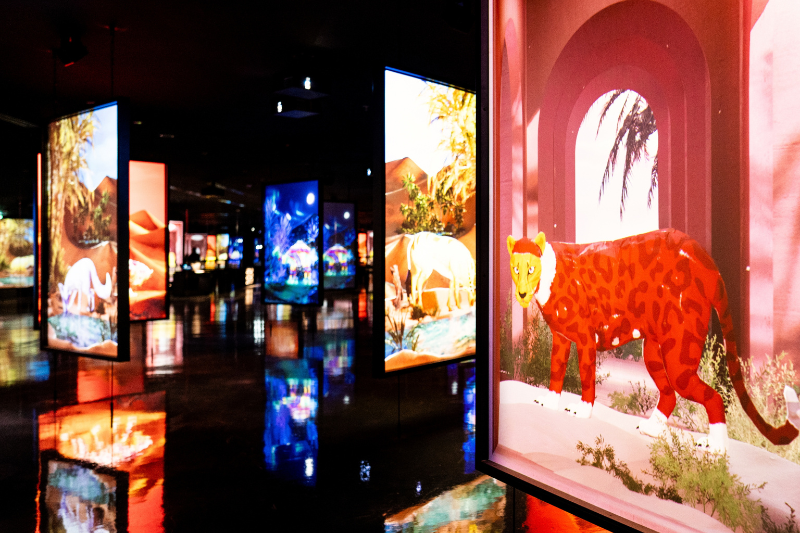
Located within The Dubai Mall, Korean-born ARTE Museum takes visitors through a journey beyond time and space with its ‘Eternal Nature’ exhibition, traversing across 14 zones filled with stunning works and powerful elements of nature. As you move through the galleries, you will be surrounded by blooming camellia flowers, beautiful waves, lush forest landscapes, tranquil starfields stretching infinitely around you. Visitors can also stimulate all their senses for a truly engaging experience by interacting with the ‘Live Sketchbook’ exhibit.
Bait al Banat Women’s Museum
Located near the Gold Souk in Deira, the Bait Al Banat Women’s Museum is all about shining a spotlight on the power of the female in this region. Offering an insight into the history of Emirati women and their role in the country’s development, exhibits in the museum cover the lives of individual women including artists, activists and scholars via images, interviews, personal items, letters and diaries. There is also an art gallery displaying the work of contemporary female artists from the UAE, with regularly updated exhibitions.
Cinema Akil
This stylish art house cinema is the only independent art house in the GCC and champions local, regional and classic cinema. The ethos aligns with the cinema’s ongoing commitment to being the platform where the untold stories of the region are told loud and proud. Located in Alserkal Avenue, this is a full-blown vintage cinema and regularly screens stunning work by local and regional talent to give them a platform to shine at a time when the bigwigs get the big names.
Coffee Museum
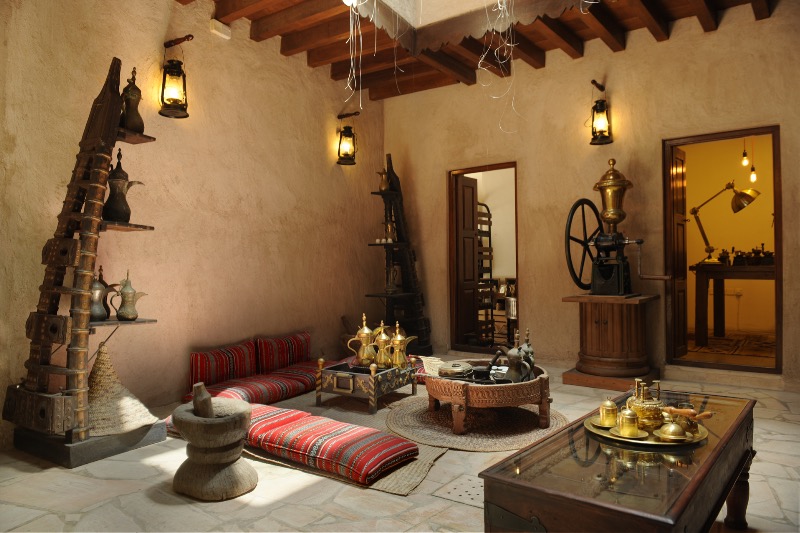
The largest coffee museum in the Middle East is right here in Dubai in the Al Fahidi Historical District and it’s free to enter. It showcases a wide selection of antique items from the regional and international coffee history and culture. Experience a number of different regional styles of coffee including the local Arabic style, Ethiopian style, Japanese style, and more. You can even grab a coffee, sit back and sip as you get more coffee education in the cosy space. Insider tip: make sure to try their coffee-flavoured ice lollies.
Dubai Coffee Museum, Al Fahidi Historical Neighbourhood, Bastakiya, Villa 44, Dubai, Tel: (0)4 353 8777, @coffeemuseum
Courtyard Playhouse
This is the passion project of two residents and started out as a partitioned office space, which they renovated over a period of a year. Slowly, it turned into Dubai’s first and most beautiful independent small theatre set in The Courtyard, Al Quoz. It’s a true Dubai success story, and shows how expats come to make this city their home. Now, the space holds acting workshops, monologue workshops, improv shows, comedy shows, plays, play screenings and more.
Dubai Gold Souk
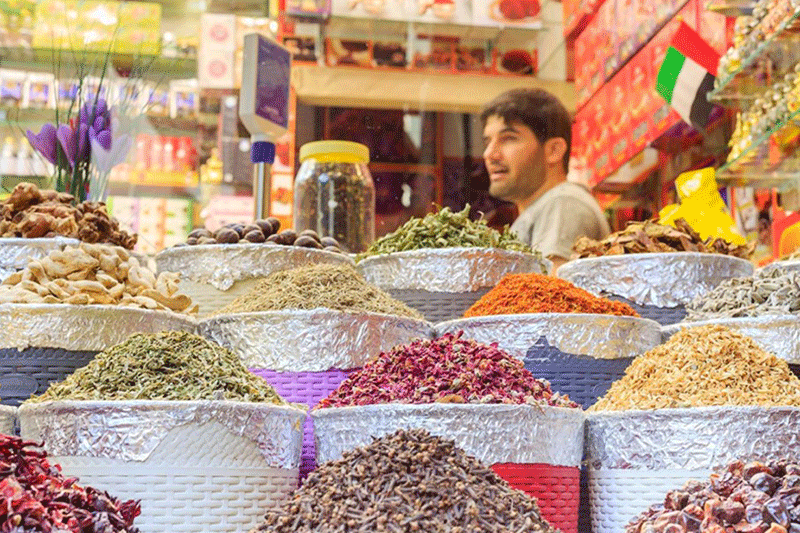
The Souk is a landmark of great importance in the city and remains traditional, complete with eager vendors who butter you up for a sale. There’s a gold market and a spice market to explore, and also some shops with trinkets and souvenirs. The tiny lanes are all open air and some of them have rustic wooden archways. It’s a wonderful glimpse into a different face of the city, away from all the glitz and glamour. Dubai’s old town stands firm and proud to this day, as a symbol for the humble beginnings of this city.
Dubai Opera
This iconic showhouse is a santcum of art, culture and convergence, bringing to Dubai some of the best artists, the most iconic performances, the most revelled stories and a wealth of performing arts from the past and the present. The sprawling theatre has a capacity for 2,000 audience members and is set over 650,000 sq ft. Ballet, opera, plays, musical performances, concerts, stand-up – you name it, they have it.
Efie Gallery
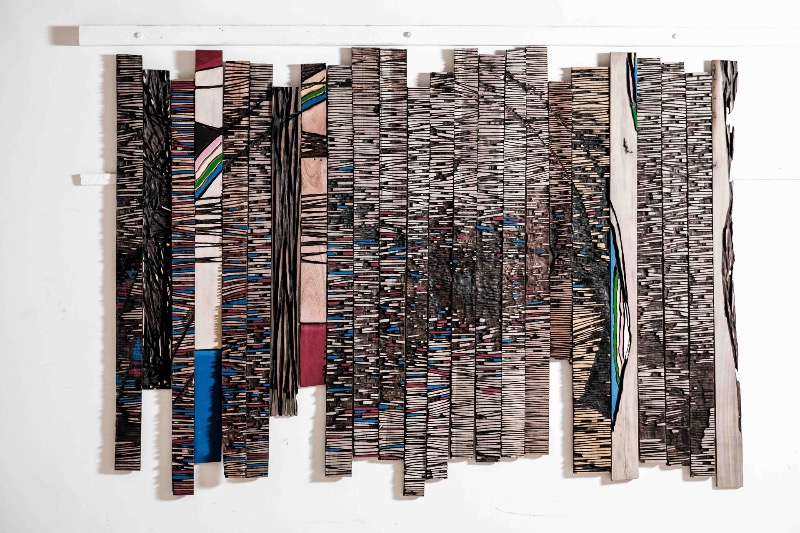
Specialising in the representation and advancement of African art, The Efie Gallery hosts a diverse range of artists, exhibitions, as well as a dynamic residency program that promotes collaborations with local artists, institutions, and community members. Make sure to keep track of their socials as they are always hosting vibrant and interesting new exhibitions, showcasing up and coming talents.
Efie Gallery, Al Khayat Art Avenue, Al Quoz 1, Dubai, Tues to Sun 11am to 7pm, Mon closed, Tel: (0)42 524 182, efiegallery.com
Etihad Museum
The Etihad Museum documents the founding story of the UAE and is most appropriately located next to the Union House, where the the signing of the treaty establishing the UAE took place in 1971. Keeping up with the theme of history, the structure is designed in the shape of a manuscript, with seven columns built into the museum to resemble the pens used to sign the original declaration. It’s a lovely dose of history and heritage combined.
Al Fahidi Historical Neighbourhood
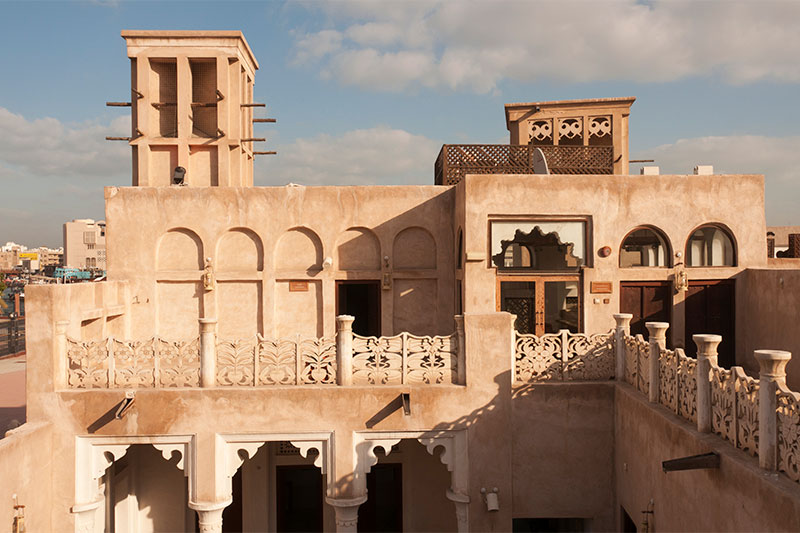
There are museums galore in the Al Fahidi Neighbourhood. Housed in Al Fahidi Fort, the Dubai Museum is the oldest existing building in Dubai. The fort was built in 1787 and has now been converted into a museum displaying all the history and heritage of the city, from the way the people lived to the way they fought wars and did trade, undegoing renovation at the moment. Witness antiquities and artefacts from before the oil boom. There’s also the Dubai Coffee Museum, for all things local sources of caffeine, the Coin Museum in Bur Dubai and the house of Sheikh Saeed Al Maktoum.
The Fridge
The Fridge in Alserkal is a welcome-to-all creative space, hosting world-class events, concerts, cultural programming and festivals. There’s always something fun and creative happening at The Fridge, which is why it attracts creatives and artists from all over. It’s all about live events and the performing arts at this one. Think talks, workshops, concert sessions, poetry, open mics, stand-up and much more.
Hatta Heritage Village
Hatta is well-known for its mountain ranges, the glamping activities and the thrilling sports. But there is also some pretty impressive history and heritage to the town. Head over to and back in time to the Hatta Heritage Village, set around the majestic Hajar mountains, shrowded in gorgeous date palms and surrounded by expansive land. Over 30 structures have been refurbished and you will be able to wander around and picture what life was like back in the day.
Heritage Express
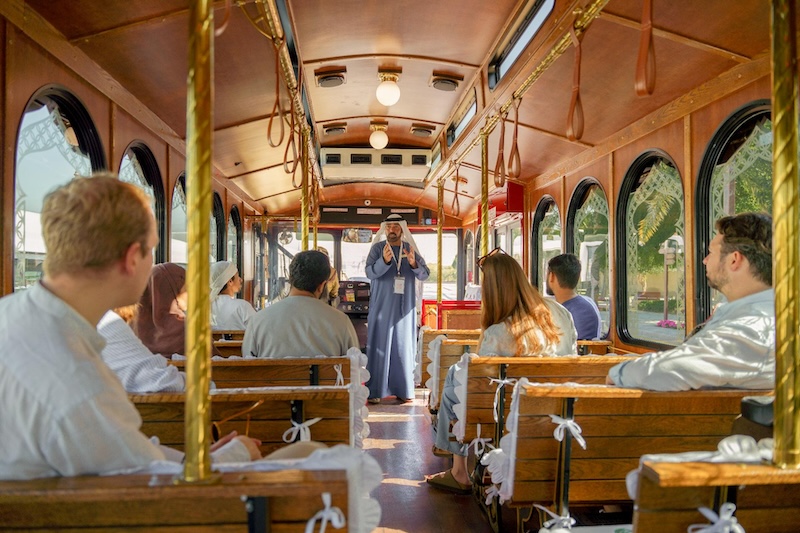
Take a tour of Dubai’s best known cultural sites on this charming trolley. The Heritage Express is a history lesson on wheels, and takes you through the other side of the UAE’s insane modernity. Departing from the Sheikh Mohammed Centre of Culture and Understanding, the Heritage Express will show you the hidden collection of cafes, museums and art galleries among the Al Fahidi Historical Neighbourhood. Learn about the local culture, dress and customs, and the Emirati way of life – the foundation of local society. These tours drive past the city’s most precious cultural landmarks, while guests listen to songs and hear stories passed down through generations.
IMMERSEE
Immersee is more than just a pretty art space – it has one very important message to send out: sustainability. It is all set to educate the audience through its immersive art experiences, large-scale multimedia installations and performances. It feels like you’ve walked into walls full of paintings. The building itself is cutting-edge and is a net zero emissions building operating solely on solar energy. Immersee combines art projections, visuals, narrative, sound and technology to send out its powerful message. It’s a great way to bring attention to an important cause and make it more interesting to learn.
Iranian Mosque
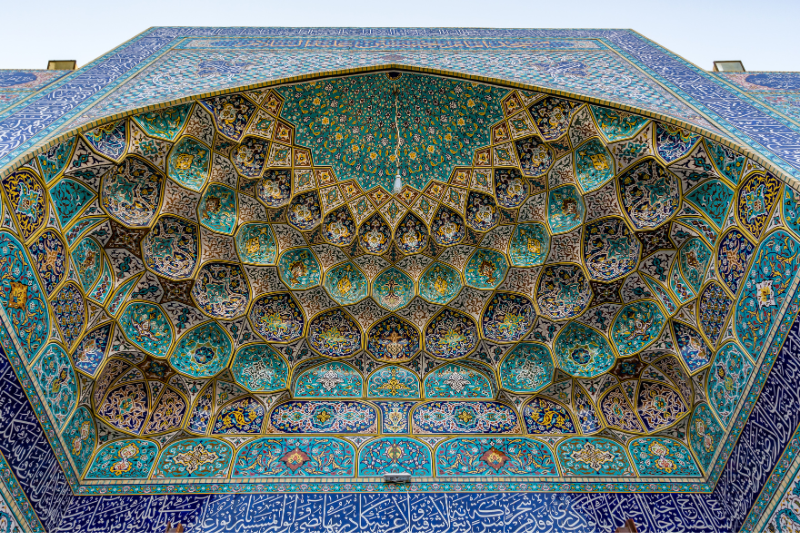
A gorgeous structure of Islamic significance, the Iranian Mosque is a must-see attraction in Dubai. The mosque was founded by the local Iranian community, built in 1979 with the support of the Iranian Red Crescent, and is also called the Imam Hussein Mosque. The design takes inspiration from quasi-Fatimid and Persian influences, with the outside covered entirely in tiles in shades of blue and other bright colours.The mosque has a library with over 14,000 books of diverse topics and languages including Arabic, Persian, Urdu and English. The Sheikh Mohammed Centre for Cultural Understanding runs four weekly tours of the mosque, during which non-Muslims visitors can visit and explore.
Jameel Arts Centre
This is the only contemporary art platform you’ll need. Jameel Arts Centre is an independent institution dedicated to exhibiting contemporary art to the public and engaging communities through learning, research and commissions. Located in Al Jaddaf Waterfront, the dynamic art space champions primarily contemporary and modernist art, and also have a library, a co-working space, a sculpture park and gardens. The space pioneers educational initiatves and supports local artists to help them grow.
Jumeirah Mosque
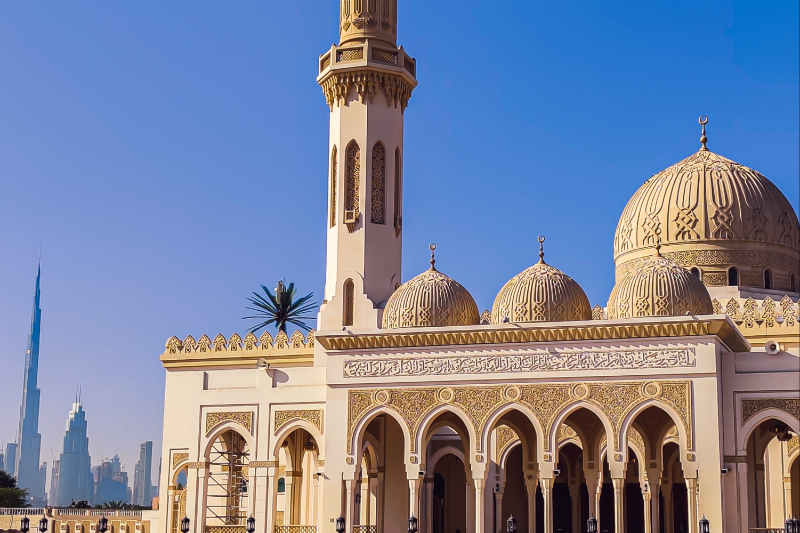
The Grand Jumeirah Mosque first opened back in 1979 and was a gift from the Late Sheikh Rashid bin Saeed Al Maktoum, the former Ruler of Dubai and father of the current Ruler of Dubai HH Sheikh Mohammed bin Rashid Al Maktoum. This architectural treasure has grown to be one of the emirates’ most loved landmarks for its interactive Open Doors. Open Minds program. The mosque is open to the public at 10am and 2pm every day except Fridays. The 75-minute tour costs Dhs35 per person and comes with light Emirati refreshments at the majlis before the program starts.
Jumeirah Mosque, Jumeirah 1. Daily except Fridays 10am and 2pm, Dhs35 per person, jumeirahmosque.ae
Leila Heller Gallery
The brand’s first international outpost outside of New York, the Leila Heller Gallery in Alserkal Avenue has gained much recognition across the globe over three decades, known and loved as a pioneer in promoting creative dialogue and cultural exchange between Western artists and Middle Eastern, Central and Southeast Asian artists. Here in Dubai, at 14,000 square feet, it is the largest art gallery in the UAE with three exhibition spaces and regularly plays host to the best of the best in the local art world for art enthusiasts and beginners alike to immerse themselves into. Head over now to venture into a unique brand of art.
Mohammed Bin Rashid Library
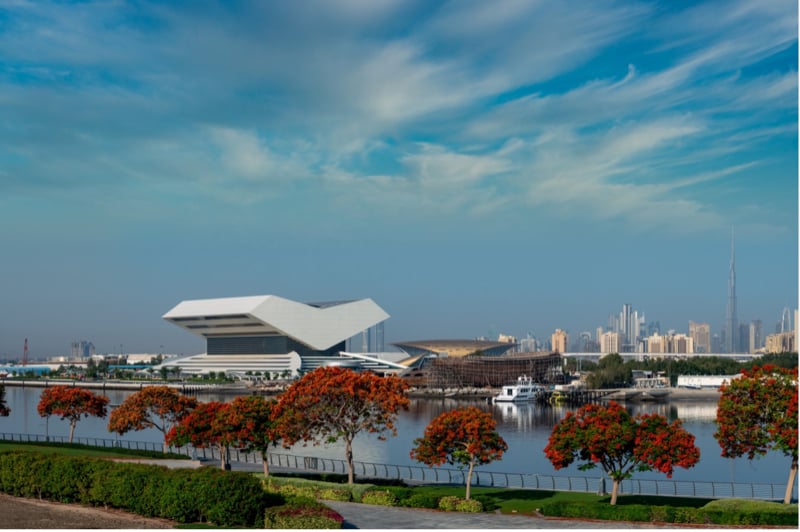
This is one structure you won’t miss when you drive by it. The Mohammed Bin Rashid Library is located by the Al Jaddaf Waterfront and is designed to look like a book on a giant rehl, which is the wooden stand that holds the Quran when it is read– quite appropriate for a library. This is another hub of knowledge and learning, intersected with culture and creativity, because not only does the library have probably the best, most expansive collection of books in the city, but also co-working spaces and a regular program of events.
Quranic Park
Located in Al Khawaneej, the Quranic Park is designed to give a better cultural and educational understanding of the Islamic heritage, while still being a fun place to visit for children, families and those looking to learn more about the Holy Quran. The 64-hectare park offer visitors a brilliant and intelligent insight into several areas of the Holy Quran and has a few attractions – The Glass House, the Cave of Miracles and the Park. Entry to the park is free, but you pay Dhs5 for entry to The Glass House and the Cave of Miracles.
Al Safa Art and Design Public Library
Located on Al Wasl Street, Al Safa Art and Design Library is a haven for creatives and art enthusiasts, where they can come together, meet, create, work, research, read and collaborate.This dynamic platform brings the art community together, and shines light on Dubai’s collective effort to become a more educated, inspired, well-read and creatie city. The library is an all in one space and holds a collection of over 62,500 books, surrounded by art installations, paintings and photographs. There are also co-working spaces and an art gallery space for designers, architects and artists to collaborate.
Satwa

This is a quaint slice of Dubai history – The neighbourhood of Satwa feels like a bubble suspended in space – not quite as back then as the Old Dubai it leaves behind, but also not quite as now as the sky-skirting skyscrapers and glittering lights of the Sheikh Zayed Road. It’s something like a portal, through which you can watch your surroundings transform in real time. If not Satwa itself, we’re fairly certain you’ve seen the wall-climbing, larger-than-life graffiti art on many of the buildings in the area. It’s a pop-culture symbol of the space, and these characters are the perfect mascots of what the neighbourhood stands for – young heritage.
Al Shindagha Museum
Before the UAE was a big, bustling metropolis, it was a desert land. The evolution has been swift and surreal, and the halls of the museum will take you through that history of change and development. Inside the museum, visitors are transported back to the 19th century, where they learn it all, from the pearl diving, the oil era, cultural practices and the major significance of the Creek on trade. You’re sure to leave with profound knowledge and insight into the country’s rich past, a feeling that you’ve perhaps seen a different universe all together, one you can’t through these tall buildings.
Theatre of Digital Art
TODA has long been a hub for combining art and technology to champion a different kind of creativity. The UAE’s first 360-degree space to enrich the local technological art landscape, TODA showcases all the forms – from classical masterpieces to NFT and new media, from music to theater. They’re trying to demolish the narrative that digital art lacks soul, the human touch and the same tenderness and emotion that other forms have. Find digital shows, 360° live music nights, wellness sessions and more. This is the intersection of art and technology.
XVA Gallery
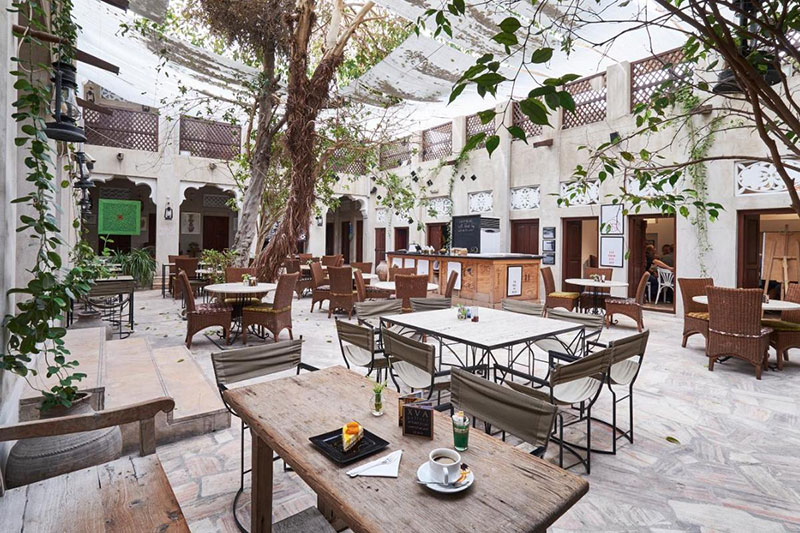
The XVA Gallery is located inside the XVA Art Hotel. The refined art gallery stocks contemporary pieces that are up for sale, perfect to add to or start a fine art collection. They even offer art consultancy services, if you’re looking for that sort of thing, and host exhibitions on the regular. It’s a great space to soak up some culture while absorbing the charm of the old city. It’s a great starting point to explore the Al Fahidi Historical Neigbourhood, which will take you back in time to the whims and charms of Old Dubai.
Abu Dhabi
Al Ain National Museum
Unlike many of the other museums in the country, this musuem takes you back literlaly to the begin of the civilization in the area. The city of Al Ain was chosen to build this museum due to the numerous and diverse archaeological sites it houses, dating back (5,000) five thousand years. The musuem contains a myriad of exciting artefacts, discoveries and more from the Neolithic Age, the Bronze Age, the Hellenistic age and the pre-oil era. It’s a fascinating visit, understanding how people lived here that long ago, and winessing the evolution.
Al Ain Palace Musuem
The Al Ain Palace is one of the best reinstated palaces in Abu Dhabi, and was the home of Sheikh Zayed bin Sultan Al Nahyan, the Founding Father of the UAE and the frst President of the UAE. He lived here with his family till the late sixties, till he moved to Abu Dhabi. The palace and private residence provide insights into the lives and culture of both the ruling family and the community until the country’s transformation after the discovery of petroleum. The oldest building in the palace dates back to 1937, to give you an idea of the history.
Abrahamic Family House
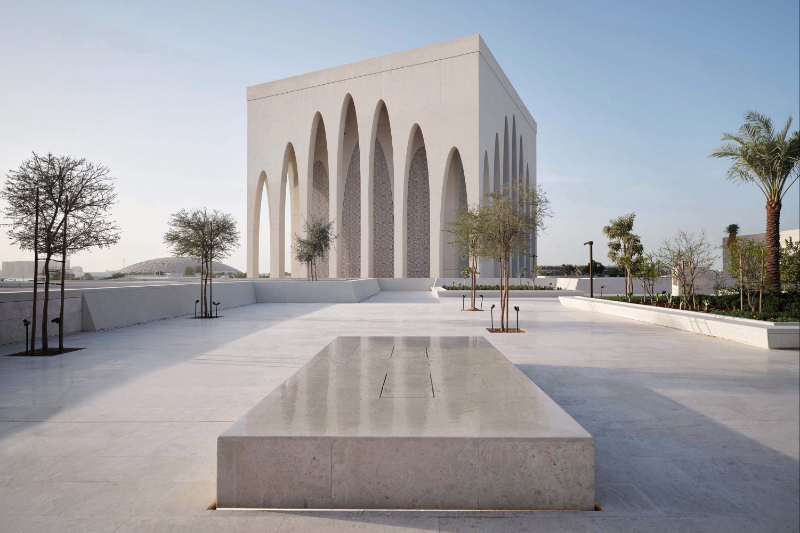
In a wonderful sentiment of solidarity, we have the at the heart of the Abrahamic Family House: Imam Al-Tayeb Mosque, St. Francis Church, and Moses Ben Maimon Synagogue. Elegant and minimalistic, the mosque’s exterior is made up of seven arches, reflecting the importance of the number seven in Islam. In addition to the three individual sites of worship, there are communal areas such as the serene and reflective peace garden. To make the most out of the experience, book online in advance to secure yourself one of the expert ‘storytellers’. Entry is free of charge.
The Arts Centre at NYU Abu Dhabi
This is the performing arts centre of the New York University Abu Dhabi campus and is a space of culture, connection and the joy of performance. Here, the education and the creativity flow together, and enrich not just the university but also the community it functions in. The shoawcases include music, theatre, dance, film, poetry, family programs and every measure of genre and discipline. Not only is it a great platform for the students, but also locally and internationally renowned artists to bring their best. They always have something buzzing here, so keep an eye out for the updates.
Bait Mohammed bin Khalifa
![]()
Once the home of the late Sheikh Mohammed bin Khalifa Al Nahyan, father-in-law to Sheikh Zayed bin Sultan Al Nahyan, Founding Father of the UAE — Bait Mohammed bin Khalifa has been renovated and transformed into a cultural community centre in Al Ain. Its new role, as well as preserving an important artefact of heritage, is to provide a space for community arts, crafts and creativity. Al Ain Theatre has established a permanent hub at Bait Mohammed bin Khalifa, offering authentic artistic and cultural events such as festivals, courses and workshops.
Al Ain, daily 10am to 8pm (Fri 2pm to 10pm), free, Tel: (03) 118335, baitmohammedbinkhalifa.ae
BAPS Hindu Mandir
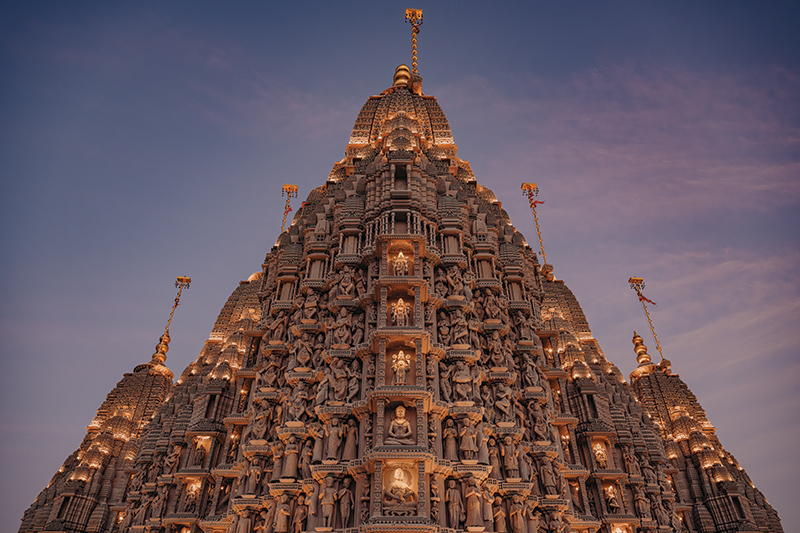
Four years of meticulous work by artisans in India and the UAE have come to fruition in Abu Dhabi’s Abu Mureikha area. The temple has been built out of pink sandstone and stunning white marble, atop 27 acres of land, and features seven stunning spires, each symbolising an emirate to adorn the mighty structure. Ripe in detail and religious relevance, the structure has been intricately carved by 2,000 artisans out of 5,500 tonnes of white marble and 14,500 tonnes of pink sandstone. The temple is open to the public on certain days, so you can visit to learn more about the history and heritage.
Bassam Freiha Art Foundation
This stunning art space is the newest addition to the capital’s art and culture scene, where art fans can discover rarely seen works of art drawn from private collections locally, regionally and internationally. The whole thing is a philanthropic institution brought to life by established art patron and collector Bassam Said Freiha. The best part – it is free and open to all. The venue is located at Manarat Al Saadiyat on Saadiyat Island and stands out with a white facade which looks like it floating above the water element below.
Emirates Heritage Club
![]()
Get a taste of life before the skyscrapers and vibey beach clubs at this recreation of a traditional Emirati village, conveniently located next to Marina Mall on the edge of the city. Conceived by the Emirates Heritage Club, you can catch local artisans demonstrating their skills in metalwork, pottery, weaving and glass-blowing. There’s even a mini souk where you can pick-up souvenirs from these time-honoured crafts.
Abu Dhabi Corniche Breakwater, daily 11am to 11pm, Dhs5, Tel: (02) 681 4455, torath.gov.ae
The Founder’s Memorial
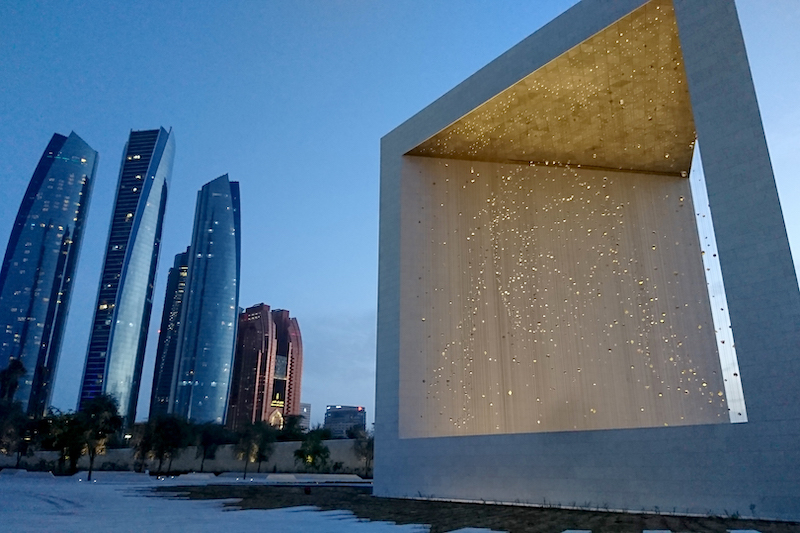
This is the space to be to understand and learn about the Father of the Nation. The centerpiece of The Founder’s Memorial is a monumental public artwork called ‘The Constellation’, a dynamic three-dimensional portrait of the late Sheikh Zayed that can be experienced differently from multiple viewing points around the memorial. The artwork consists of 1,327 geometric shapes – polyhedrons or platonic solids – suspended from 1,110 cables. At night, the geometric shapes of The Constellation shine like stars. The remaining experience is a walk-through interactive musuem where you can learn in depth.
Hafit Tombs
The beehive tombs of Jebel Hafit date back to the Bronze Age and are present in the hundreds at the base of the second-tallest peak in the UAE. They reflect a 5,000-year-old history of the region of Al Ain, built in stone and housing the dead of that time. The tombs are made of rough, uncut rocks and have a domed shape, thus the beehive moniker. Each tomb is believed to have held two to five graves. Artefacts have also been found in the tombs, including Mesopotamian pottery, beads, spears, daggers and vessels.
Hilli Archealogical Park
This is the site of Hilli Tombs, which are surely recognisable from their domed shape. Hili Archaeological Park is one of the best known archaeological sites in the UAE and is part of the Hili Cultural Site. This site is included in the UNESCO World Heritage Site of Al Ain. It contains Bronze Age (3000-1300 BCE) and Iron Age (1300-300 BCE) villages, burial grounds and agricultural infrastructure. The Umm an-Nar period is when the Hilli settlement expanded, in the period between 2500 and 2000 BCE. The largest collection of tombs and buildings from this period in the UAE is at Hili.
Louvre Abu Dhabi
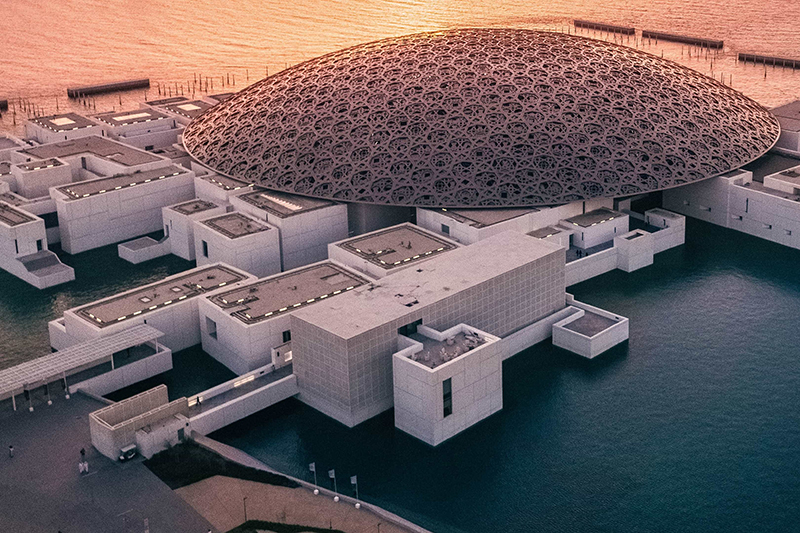
Louvre Abu Dhabi is the certified hotspot of all things art, history and culture in the capital. The first intenrational outpost of the famed Louvre in Paris, France, which technically everyone has on their must-visit list, this hub of the arts is always buzzing with happenings – exhibitions, showcases, workshops, talks, performances, art history walks and more. They also regularly bring in masterpieces from France for limited periods for art enthusiasts to see. The stunning dome is the highlight of this location, offering a rain of light as you walk the grounds.
Qasr Al Hosn
Qasr Al Hosn has seen Abu Dhabi grow from the gound up, being a constant witness of the tranformation of the capital. This fort stands as a national monument from the 18th century and is one of the oldest buildings in the capital. It was built in 1790 and houses the city’s first permanent structure – the watchtower. In it’s time as rhe centre of the community, the commanding structure overlooked the coastal trade routes and protected the growing settlement established on the island, the first communities to move to to this area. It has been home to the ruling family, the seat of the government and a consultative council.
Qasr Al Watan
Housed within the Presidential Palace compound in Abu Dhabi, this stunning landmark is Arabic for ‘Palace of the Nation’, and is a working palace that hosts official state visits and summits. Apart from admiring at the stunning Arabian architecture, visitors to the landmark will gain a deeper understanding of the UAE’s governing traditions and values, and explore a vast collection of historic artefacts and manuscripts. The Palace is white in color which was picked to symbolise purity and peace.Tickets are purchased at the visitors centre at the main entrance to Qasr Al Watan, after which you’ll take a short bus ride to the palace.
Sheikh Zayed Grand Mosque
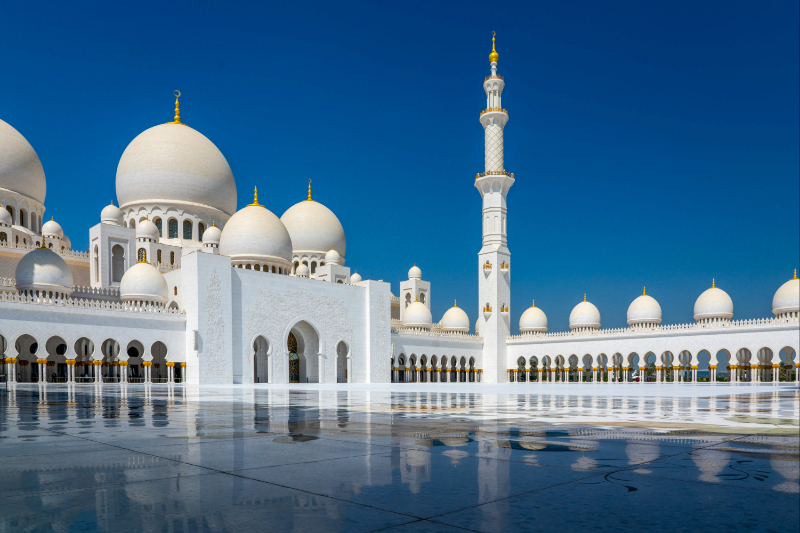
The largest mosque in the UAE, Sheikh Zayed Grand Mosque, is easily one of the most beautiful mosques in the world. With a total of 82 domes and over 1,000 columns and surrounded by reflective pools, it’s a stunning sight and beautiful white vision. From marbled halls to gold-plated chandeliers, mosaic artwork to amethyst-and-jasper-embedded columns, the place of worship a tribute to the local culture. Sheikh Zayed Mosque was the vision of Sheikh Zayed bin Sultan Al Nahyan – the Founding Father of the UAE. Its open-door policy welcomes visitors from all over the world and up to 50,000 worshippers daily.
Al Wathba Fossil Dunes Reserve
A bit of natural history for you, and quite a spectacular bit at that. The Al Wathba Fossil Dunes Reserve is located 45 kilometres outside Abu Dhabi city and is home to more than 1,700 fossil dunes. The dystopian-esque stone structures were formed with the force of wind and sediment deposits over four million years, according to experts. The reserve itself is visitor-friendly, with trails, benches, shading, light and sound shows and an amphitheatre. If you’re looking to explore the natural history of the country, this is a good place to start.
Sharjah
Al Majaz Amphitheatre
This is the performance art hub of Sharjah, and brings togther some of the best plays, musicals, community events and concerts across a broad range of genres. It’s a melting pot of arts, culture and heritage, and features a stunning edifice – an open-air theatre inspired by the Roman-style Amphitheatre and designed in a semicircular shape. At 7,238 square meters in area, the theatre can accommodate 4,500 spectators. There is a large stage mediating Al Majaz Amphitheatre where artists can present their performances. It’s located on a little island out in the water at the Al Majaz Waterfront.
Al Noor Mosque
Al Noor Mosque is Sharjah’s only mosque that is open to non-Muslims with free one-hour tours at 10am every Monday and Thursday. Dominating the emirate’s skyline and overlooking Khalid Lagoon, the mosque has a classic Ottoman design with 34 domes and the interior of the mosque is etched with intricate calligraphy of verses from the Holy Quran. As a popular tourist destination, the mosque offers free traditional Emirati dress upon entry as well as Arabic coffee or gahwa. It’s hard to miss because of it’s beautiful façade – the lighting really catches your eye.
Sharjah Art Foundation
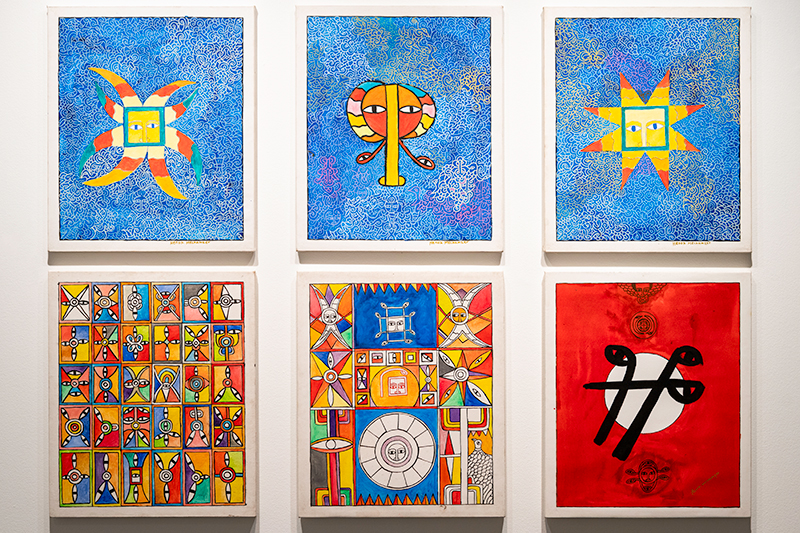
Above: Henok Melkamzer, Untitled works, 2023.Installation view: Telsem Symbols and Imagery, Sharjah Art Museum, 2024. Image courtesy of Sharjah Art Foundation. Photo: Shafeek Nalakath Kareem
Sharjah Art Foundation is all about uplifting culture, highlighting the arts and giving a platform to admirers, enthusiasts and creators of it. The space hosts galleries and exhibitions on the regular, as well as several programme runs in the year, featuring highly talented, passionate and incredible artists to showcase their craft at several locations in restored heritage houses and art spaces across the city. They have permanent collections as well as guest ones and a whole lot of history to explore as well. Participate in their regular programming anmd workshops besides the exhibits.
Ajman
Ajman Museum
Perhaps Ajman’s most interesting heritage experience is the Ajman Musuem. The restored 18th century fort houses a large collection of archaeological artefacts. Check out the exhibition of an excavated graveyard discovered near Ajman City Centre; some of the jewellery and pottery found there dates back as far as 3,000 BC. Some of the oldest civilisations have passed through this region, so it only makes sense to discover more about them.
Ras Al Khaimah
Dhayah Fort
Dhayah Fort in Ras Al Khaimah is a must-visit for UAE history enthusiasts. It is the only hill fort remaining in the UAE and dates back to the Late Bronze Age (1600 to 1300BC). While visitors head to the fort now for the history, heritage and stunning views, back then it was used by the locals for fortification. The monument is of historical importance and is the place where the battle between the British troops and local Qawasim tribes took place in 1819. At the base of the fort, visit the large Wadi Souq tombs which date between 2,000 to 1,300 BC.
Al Jazeera Al Hamra
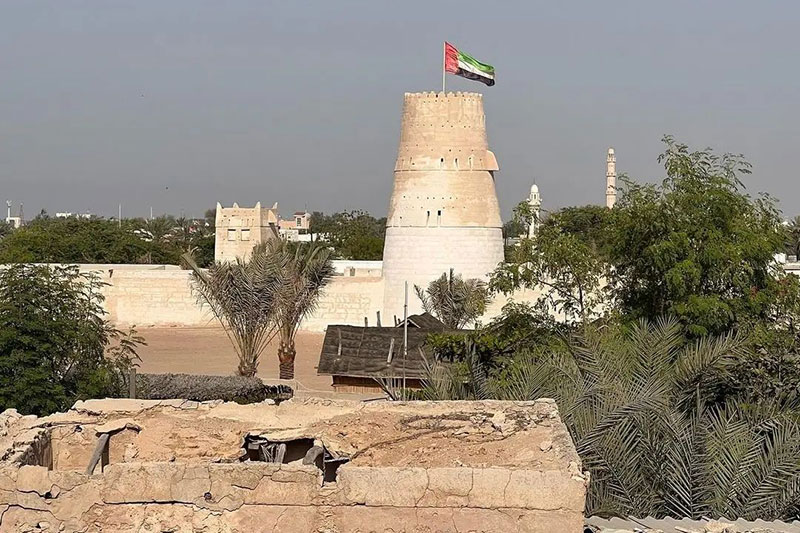
This stunning heritage village is the only remaining historical pearling village in the entire Gulf region; the rest were demolished with the discovery of oil. The neighbourhood is incredibly quintessenital, with all the elements like a fort and watchtowers, mosque, souq and extensive courtyard houses of various designs. There is a variety of construction styles from small, simple houses, courtyard homes, two-story buildings to a large courtyard residence where the wealthy pearl merchant lived. At the turn of the century, the village had some 500 houses and was occupied by the Zaab tribe.
You might also like
Umm Al Quwain
Umm Al Quwain National Musuem and Fort
Being more towards the rural side, there is a wealth of history and heritage in Umm Al Quwain. The second smallest emirate has much culture to offer. Its National Museum showcases its treasured heritage which dates back to 1768. This fort-like complex is located in the Old Souq area, with a turret standing tall, matching the traditional look and feel of the surrounding buildings. To enter, you will only have to pay Dhs4, and children under 15 can enter for free. It’s a fun family day out, and at the end of it, you’ll learn something new about the UAE’s history.
Fujairah
Al Bidia Mosque
This mosque is located a little outside Fujairah in the village of Al Bidya and is chock full of cultural significance. Considered one of the oldest mosques in the country, it is believed to be constructed sometime between the middle of 15th and 17th century – around 600 years old. Nonetheless it is still a completely sound, standing structure and hosts daily prayers even today, despite being a tourist attraction. The building itself is a small space, with little cut-outs in the walls for windows and a rudimentary design put together with materials that were available then. The mosque features on the World Heritage List compiled by UNESCO.
Fujairah Historic Fort
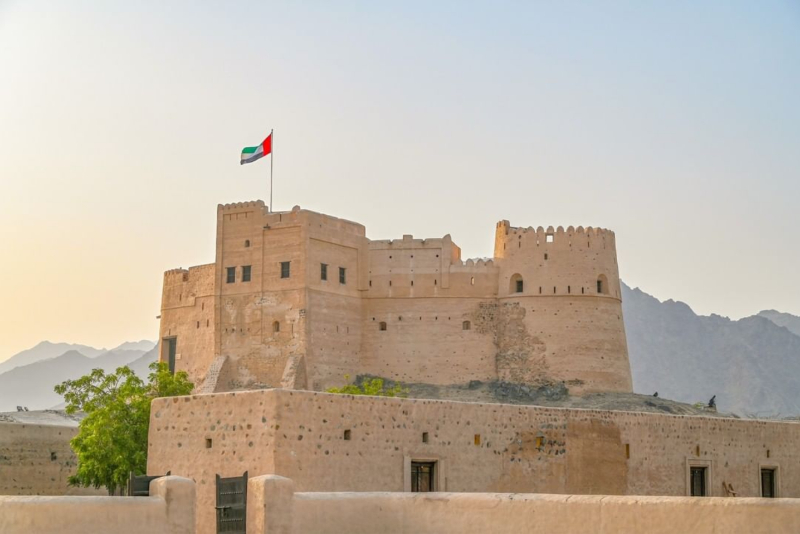
There is so much history in the lesser known areas of the country. Fujairah is one sucn place and this fort is one is for the history lovers. Built in the 16th century, Fujairah Fort is one of the oldest forts in the UAE and the largest castle in Fujairah. The top of the tower is elevated around 20-metres above sea level offering incredible views over the city while the fort is known for its significant role in resisting invasion and bombardment by the British Royal Navy. The entry is free, so head over to explore.
Images: Socials/Supplied
